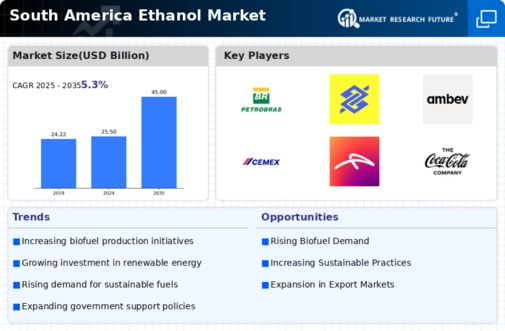The South America Ethanol Market showcases a dynamic landscape characterized by various producers and entities competing for market share, driven primarily by the growing demand for renewable energy sources and sustainable practices. This region is well known for its significant production of ethanol, primarily derived from sugarcane, which is a crucial feedstock for the biofuel industry. The competitive insights within this market highlight the ongoing trends, market entry strategies, and the diverse portfolio of products offered by key players.
Analyzing these aspects sheds light on how firms are positioning themselves in a market that is increasingly emphasizing environmental sustainability and energy efficiency. The interplay of regulatory frameworks, technological innovations, and consumer preferences further influences the competitive dynamics, providing opportunities for growth and expansion in the sector.Focusing on Usina Jatobá, this company has made a notable impact on the South American Ethanol Market through its significant operational capabilities and strong production capacity. Usina Jatobá has established itself as a competitive player by leveraging advanced production techniques and sustainable practices in sugarcane processing and ethanol production.
The company’s reputation for quality products and its commitment to environmental sustainability enhance its appeal in a market increasingly seeking greener energy alternatives. Additionally, Usina Jatobá's strong relationships with local farmers and its sustainability initiatives bolster its strength in securing a reliable supply of high-quality raw materials, ensuring its competitiveness in the evolving ethanol market landscape.Grupo Sao Martinho stands out within the South America Ethanol Market due to its extensive presence and a well-diversified product portfolio that includes ethanol, sugar, and energy.
This company has built a strategic foundation through a series of mergers and acquisitions, enabling it to enhance its operational efficiency and expand its market footprint across the region. Grupo Sao Martinho focuses on innovation and technology, which facilitates high-quality production processes and increased output. Its strength lies not only in its scale of operation but also in its commitment to sustainability and compliance with regulatory standards.
The company has developed a robust distribution network that effectively addresses consumer demands while promoting eco-friendly practices, positioning itself as a leader in the South American ethanol market and contributing significantly to regional energy solutions.

















Leave a Comment